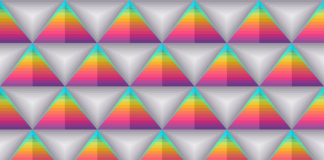Photobiomodulation (PBM), also known as Low-Level Laser Therapy (LLLT) or Cold Laser Therapy, is a non-invasive medical treatment that uses light of specific wavelengths to stimulate cellular function and promote healing in various tissues and organs. The concept of Photobiomodulation revolves around the use of light energy to influence cellular processes, leading to positive therapeutic effects. It has gained significant attention in the medical and scientific communities for its potential to treat a wide range of conditions and its role in regenerative medicine.
1. Mechanism of Action: Photobiomodulation operates on the principle of photoreception. When light of specific wavelengths is absorbed by the mitochondria within cells, it enhances cellular respiration and the production of adenosine triphosphate (ATP), the cell’s energy currency. This heightened ATP production fuels various cellular processes, leading to improved tissue repair, reduced inflammation, and increased production of collagen and other crucial biomolecules. Moreover, it can also influence signaling pathways and gene expression, further impacting cellular functions and overall tissue regeneration.
2. Therapeutic Applications: Photobiomodulation has demonstrated effectiveness in treating a wide range of conditions, including musculoskeletal disorders, chronic pain, wound healing, neurological conditions, and dermatological issues. It is commonly used for managing joint and muscle pain, promoting tissue repair after injuries or surgeries, reducing inflammation associated with various ailments, and improving neurological function in conditions like stroke and traumatic brain injuries. In dermatology, it has been employed for wound healing, scar reduction, and skin rejuvenation.
3. Safety and Non-Invasiveness: One of the major advantages of Photobiomodulation is its non-invasive nature. Unlike surgical procedures, it does not require incisions, and there is minimal risk of infection or complications. Additionally, PBM has an excellent safety profile, with very few reported adverse effects. The treatment is generally well-tolerated by patients and does not cause thermal damage to tissues, making it suitable for long-term use and repeated sessions if needed.
4. Versatility and Emerging Research: Photobiomodulation is a versatile therapy that can be applied to various areas of the body, making it accessible for diverse medical conditions. Moreover, ongoing research continues to explore new potential applications and refine existing protocols. Scientists are investigating the optimal parameters, such as wavelength, dosage, and treatment duration, to achieve the most effective therapeutic outcomes for specific health conditions.
5. Portable Devices and Home Use: While PBM was initially performed only in clinical settings using expensive laser devices, advancements in technology have led to the development of portable and affordable devices for home use. These home-use devices allow patients to administer Photobiomodulation at their convenience, under appropriate guidance. This accessibility has widened its application, making it available to a broader population for various therapeutic purposes.
Photobiomodulation is a promising therapeutic approach that utilizes light of specific wavelengths to stimulate cellular function and promote healing in various tissues and organs. By leveraging the photoreception properties of cells, PBM enhances cellular energy production and influences multiple cellular processes, leading to positive therapeutic effects. It has demonstrated efficacy in treating musculoskeletal disorders, chronic pain, wound healing, neurological conditions, and dermatological issues. Moreover, PBM is safe, non-invasive, and well-tolerated, with ongoing research exploring its potential in emerging applications. With the advent of portable devices, this innovative therapy is becoming more accessible for home use, further expanding its reach and impact in the field of regenerative medicine.
Photobiomodulation (PBM), also known as Low-Level Laser Therapy (LLLT) or Cold Laser Therapy, is a non-invasive medical treatment that uses light of specific wavelengths to stimulate cellular function and promote healing in various tissues and organs. The concept of Photobiomodulation revolves around the use of light energy to influence cellular processes, leading to positive therapeutic effects. It has gained significant attention in the medical and scientific communities for its potential to treat a wide range of conditions and its role in regenerative medicine.
Photobiomodulation operates on the principle of photoreception. When light of specific wavelengths is absorbed by the mitochondria within cells, it enhances cellular respiration and the production of adenosine triphosphate (ATP), the cell’s energy currency. This heightened ATP production fuels various cellular processes, leading to improved tissue repair, reduced inflammation, and increased production of collagen and other crucial biomolecules. Moreover, it can also influence signaling pathways and gene expression, further impacting cellular functions and overall tissue regeneration.
The therapeutic applications of Photobiomodulation are vast and diverse. It has demonstrated effectiveness in treating musculoskeletal disorders, such as arthritis and sports injuries, by reducing pain and promoting tissue healing. PBM is commonly used for managing joint and muscle pain, promoting tissue repair after injuries or surgeries, reducing inflammation associated with various ailments, and improving neurological function in conditions like stroke and traumatic brain injuries. Additionally, it has shown promise in dermatology for wound healing, scar reduction, and skin rejuvenation.
One of the major advantages of Photobiomodulation is its non-invasive nature. Unlike surgical procedures, it does not require incisions, and there is minimal risk of infection or complications. Additionally, PBM has an excellent safety profile, with very few reported adverse effects. The treatment is generally well-tolerated by patients and does not cause thermal damage to tissues, making it suitable for long-term use and repeated sessions if needed. This safety and non-invasiveness have contributed to the growing popularity of PBM in various medical fields.
Photobiomodulation’s versatility is another key aspect of its appeal. It can be applied to various areas of the body, making it accessible for diverse medical conditions. From orthopedic issues to neurological disorders and dermatological conditions, PBM offers a holistic approach to healing and regeneration. Moreover, ongoing research continues to explore new potential applications and refine existing protocols. Scientists are investigating the optimal parameters, such as wavelength, dosage, and treatment duration, to achieve the most effective therapeutic outcomes for specific health conditions.
In recent years, the development of portable and affordable PBM devices has further expanded the therapy’s accessibility. While PBM was initially performed only in clinical settings using expensive laser devices, these home-use devices now allow patients to administer Photobiomodulation at their convenience, under appropriate guidance. This accessibility has widened its application, making it available to a broader population for various therapeutic purposes. However, it is essential for users to seek professional advice before utilizing home-use PBM devices to ensure safe and effective treatment.
In conclusion, Photobiomodulation is a promising therapeutic approach that utilizes light of specific wavelengths to stimulate cellular function and promote healing in various tissues and organs. By leveraging the photoreception properties of cells, PBM enhances cellular energy production and influences multiple cellular processes, leading to positive therapeutic effects. It has demonstrated efficacy in treating musculoskeletal disorders, chronic pain, wound healing, neurological conditions, and dermatological issues. Moreover, PBM is safe, non-invasive, and well-tolerated, with ongoing research exploring its potential in emerging applications. With the advent of portable devices, this innovative therapy is becoming more accessible for home use, further expanding its reach and impact in the field of regenerative medicine. As research and technology continue to progress, Photobiomodulation holds the potential to revolutionize medical treatments and improve the quality of life for patients worldwide.














